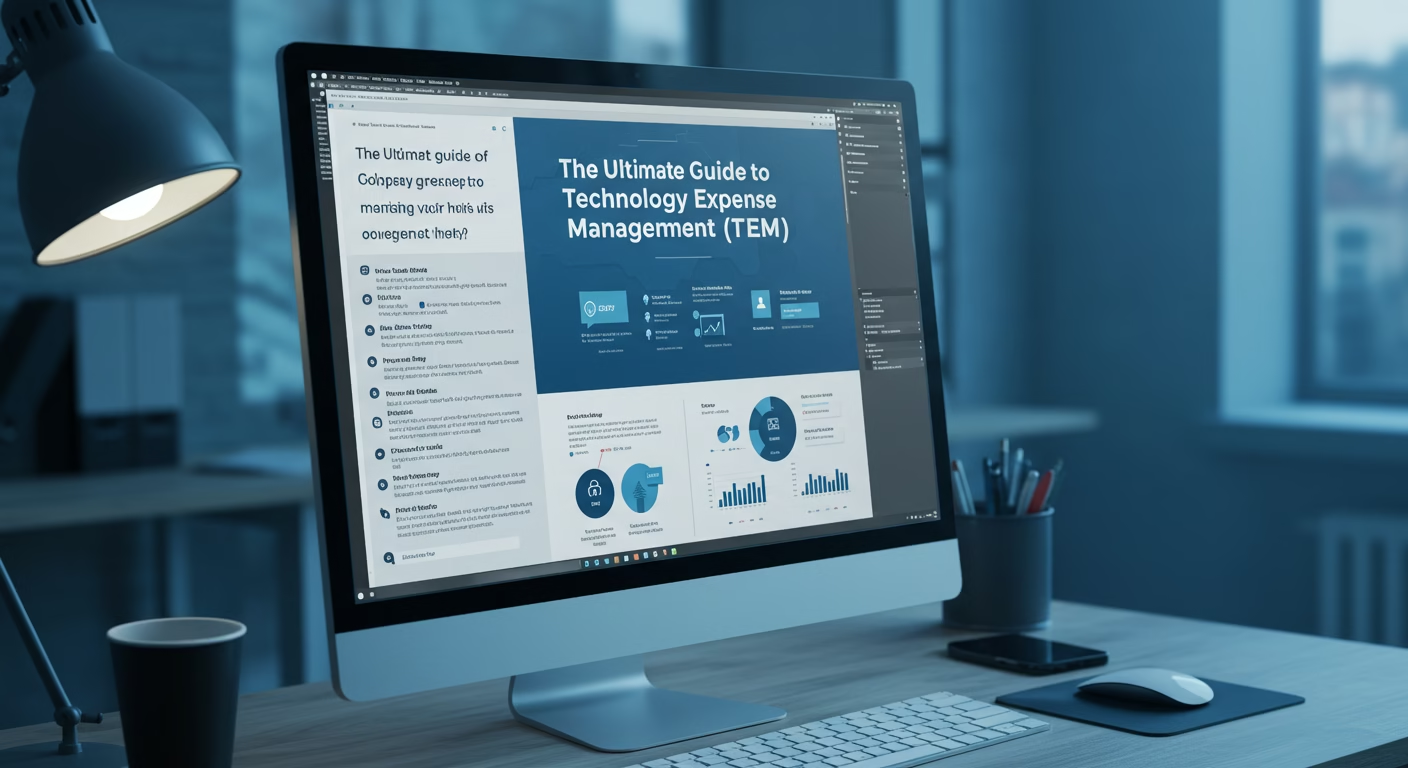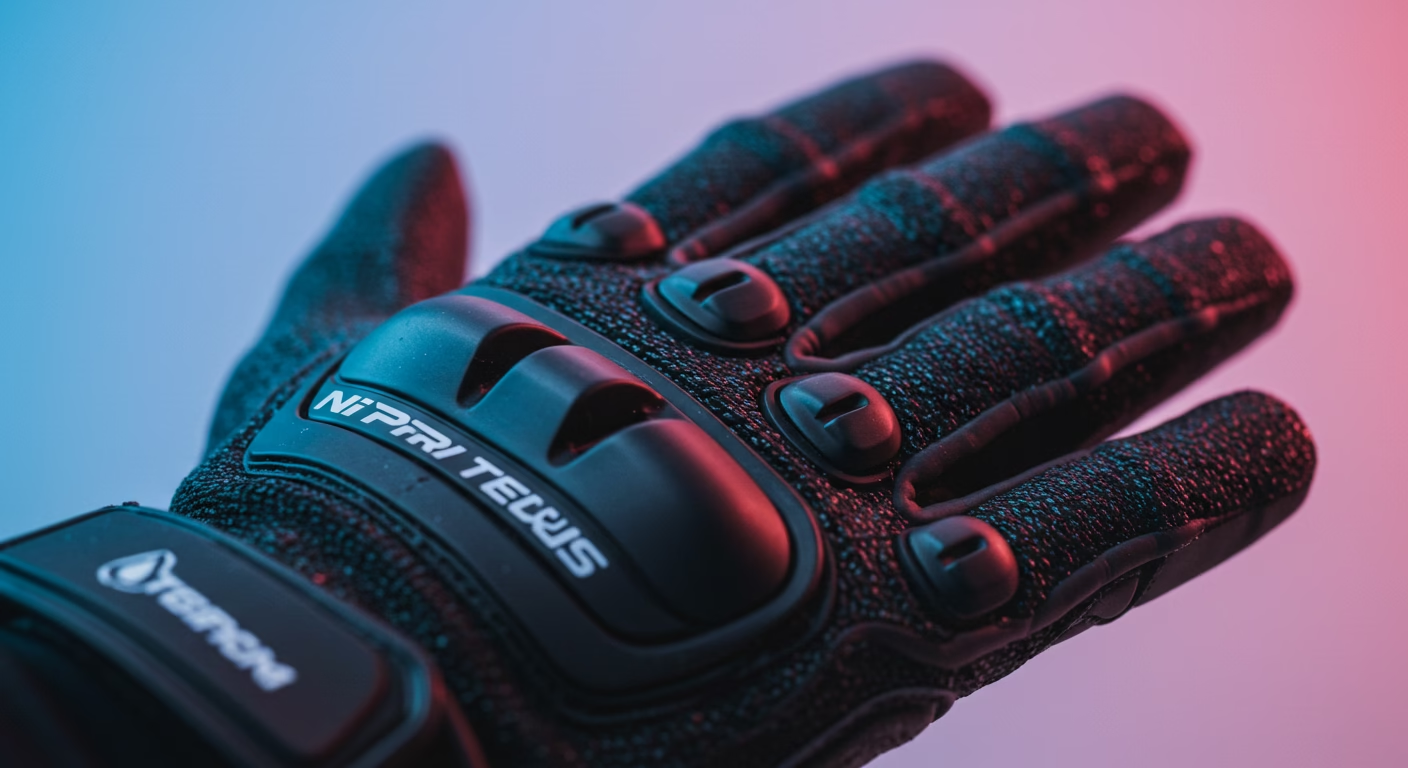TECHNOLOGY
The Ultimate Guide to Technology Expense Management (TEM)

Introduction
Technology drives modern businesses, yet uncontrolled spending creates waste. For instance, cloud services and SaaS tools cost billions yearly. However, without oversight, budgets shrink rapidly. Meanwhile, telecom and hardware expenses add up quickly. Therefore, companies must track costs carefully. Otherwise, inefficiencies drain resources. Fortunately, proper management helps. Specifically, monitoring usage prevents overspending. Additionally, auditing invoices catches errors. As a result, businesses optimise their tech investments. Ultimately, smart expense control boosts profitability.
This is where Technology Expense Management (TEM) proves essential. Essentially, TEM provides a strategic framework that systematically tracks tech spending. Moreover, it optimises costs while maintaining service quality. By implementing TEM, organisations gain control over escalating expenses. Ultimately, it transforms uncontrolled tech budgets into measurable value. By implementing effective TEM practices, businesses can reduce costs, improve visibility, and ensure compliance with vendor contracts.
In this comprehensive guide, we’ll explore:
- What is technology expense management?
- Why is TEM Important for Businesses?
- Key Challenges in Managing Technology Expenses
- Best Practices for Effective TEM
- Tools and Solutions for TEM
- Future Trends in Technology Expense Management
Let’s dive in!
1. What is Technology Expense Management (TEM)?
Technology Expense Management (TEM) refers to the process of monitoring, analysing, and optimising an organisation’s technology-related spending. This includes:
- Telecom Expenses (mobile, landline, internet, and data services)
- Cloud & SaaS Costs (subscriptions like Microsoft 365, AWS, Zoom)
- Hardware & Software Purchases (laptops, servers, licenses)
- IT Services & Support (managed services, outsourcing)
TEM involves:
- Invoice Auditing – Ensuring billing accuracy and identifying overcharges.
- Vendor Management – Negotiating contracts and optimising service plans.
- Usage Analytics – Tracking consumption to eliminate waste.
- Cost Allocation – Assigning expenses to departments for accountability.
By implementing TEM, businesses gain better control over their IT budgets while maximising ROI on technology investments.
2. Why is TEM Important for Businesses?
A. Cost Savings & Waste Reduction
Many companies unknowingly pay for unused services, redundant software, or incorrect billing. TEM helps identify and eliminate these inefficiencies, leading to significant savings.
B. Improved Visibility & Accountability
With TEM, finance and IT teams gain real-time insights into tech spending. This transparency helps in budgeting and ensures departments are accountable for their usage.
C. Compliance & Contract Optimization
TEM ensures that vendors adhere to contractual terms, preventing overbilling. It also helps in renegotiating contracts for better pricing and terms.
D. Enhanced Security & Risk Management
Unmanaged technology expenses can lead to shadow IT (unauthorised software use), increasing security risks. TEM helps track all tech assets, reducing vulnerabilities.
E. Scalability & Future Planning
As businesses grow, tech expenses grow too. TEM provides data-driven insights to scale efficiently without overspending.
3. Key Challenges in Managing Technology Expenses
Despite its benefits, TEM comes with challenges:
A. Complex & Decentralized Spending
When multiple departments purchase SaaS, cloud, and telecom services independently, manual expense tracking quickly becomes unmanageable. Consequently, organizations often face disjointed data and inefficient processes. To solve this, centralized TEM solutions not only automate tracking but also provide real-time insights. As a result, companies regain control while eliminating costly errors.
B. Lack of Centralized Visibility
Without centralized visibility, organizations cannot analyze tech spending effectively, resulting in wasted budgets. By implementing a unified TEM platform, businesses gain complete oversight, eliminating inefficiencies while optimizing costs.
C. Vendor Billing Errors & Overcharges
Since telecom and cloud providers frequently bill inaccurately, regular audits become essential. By implementing automated monitoring, companies can quickly identify errors and recover overcharges, saving time while maximizing cost efficiency.
D. Shadow IT & Unauthorized Purchases
When employees adopt unauthorized tools, it creates duplicate costs and security vulnerabilities. To prevent this, enforce approval workflows that curb shadow IT while maintaining budget control.
E. Rapidly Evolving Technology Landscape
As new technologies emerge rapidly, organizations often struggle to monitor expenses. Initially, manual tracking seems feasible, but the growing volume quickly becomes overwhelming. Therefore, companies must adopt automated solutions since they provide real-time visibility. Consequently, businesses not only control costs but also optimize resource allocation.
4. Best Practices for Effective TEM
To overcome these challenges, businesses should adopt the following best practices:
A. Centralize Technology Spend Tracking
To optimize expense management, first implement a dedicated TEM platform that centralizes all technology costs. By doing so, organizations not only eliminate manual tracking but also enhance accuracy. Moreover, this approach significantly reduces errors while providing real-time visibility. Consequently, finance teams can make data-driven decisions and improve cost control.
B. Automate Invoice Auditing & Expense Validation
By implementing AI-powered tools, organizations can instantly identify billing errors while simultaneously detecting contract violations. Furthermore, these systems not only flag unused services but also recommend corrective actions. As a result, companies quickly optimize spending and maximize ROI. Consequently, TEM processes become both efficient and cost-effective.
C. Implement Approval Workflows for Tech Purchases
To begin, implement approval workflows where IT or finance must authorize purchases. This prevents shadow IT while ensuring compliance. Additionally, it reduces redundant spending as all requests are vetted. Moreover, centralized oversight improves visibility and optimizes software investments. Ultimately, this safeguards both budgets and security.
D. Regularly Review Vendor Contracts
- Renegotiate contracts annually for better rates.
- Eliminate redundant services.
- Optimise subscription tiers based on actual usage.
E. Monitor Usage Analytics
First, monitor tool usage to identify active and underutilized systems. Then, review license needs and cancel unused subscriptions. This optimizes costs while maintaining essential functionality.
F. Allocate Costs to Departments
By allocating tech costs to departments, organizations foster accountability. Furthermore, this approach promotes cost awareness as teams monitor usage. Consequently, spending becomes more efficient while maintaining productivity.
G. Conduct Regular TEM Audits
First, conduct quarterly reviews to spot inefficiencies. Then, analyze findings and adjust strategies accordingly. Finally, implement changes while tracking improvements. This ensures continuous cost optimization and operational efficiency.
5. Tools and Solutions for TEM
Several software solutions help automate and streamline TEM processes:
A. Cloud Cost Management Tools
- AWS Cost Explorer, Azure Cost Management, and Google Cloud Billing – Track and optimise cloud spending.
- CloudHealth by VMware, Densify – Provide advanced cloud cost analytics.
B. SaaS Management Platforms (SMPs)
- Zylo, Torii, Productiv – Discover, track, and optimise SaaS subscriptions.
C. Telecom Expense Management (TEM) Software
- Tangoe, Calero, Cass Information Systems – Automate telecom expense tracking and auditing.
D. Unified IT Financial Management (ITFM) Tools
- Apptio, ServiceNow ITFM, and Flexera provide end-to-end visibility into IT spending.
E. Custom Dashboards & Analytics (Power BI, Tableau)
- Build custom reports to analyse tech spend trends and forecast future costs.
6. Future Trends in Technology Expense Management
As technology evolves, so does TEM. Here are some emerging trends:
A. AI & Machine Learning for Predictive Cost Optimization
AI will help predict future spending patterns and recommend cost-saving measures proactively.
B. Increased Focus on SaaS & Cloud Cost Control
With SaaS sprawl becoming a major issue, companies will invest more in SaaS management tools.
C. FinOps (Financial Operations) Integration
FinOps bridges finance, IT, and business teams to align cloud spending with business value.
D. Blockchain for Transparent Vendor Billing
Blockchain could reduce billing disputes by providing immutable transaction records.
E. Sustainability & Green IT Expense Management
Companies will prioritise energy-efficient tech and carbon footprint tracking in TEM strategies.
Conclusion
Technology Expense Management (TEM) is now essential for businesses. Firstly, it helps control costs and boosts efficiency. Additionally, it ensures better financial oversight. By contrast, ignoring TEM leads to wasted budgets. Therefore, companies must adopt it to stay competitive. To begin with, automation plays a key role. For example, AI-powered tools detect billing errors quickly. Moreover, they track unused subscriptions. As a result, businesses save money effortlessly. Similarly, analytics provide real-time spending insights. Consequently, decision-making improves.
Furthermore, TEM prevents shadow IT risks. In other words, it stops unauthorised software use. Meanwhile, centralized tracking simplifies expense management. For instance, all invoices are reviewed in one place. Thus, overcharges are easily spotted.
To begin, vendor contracts require frequent reviews since outdated services often incur unnecessary costs. Following audits, renegotiations typically reduce expenses while improving terms. Similarly, analysing usage data not only optimises licences but also aligns spending with real needs. Looking forward, TEM’s importance will surge as digital transformation accelerates. Particularly, AI will soon forecast expenses, whereas FinOps connects costs to business outcomes. Meanwhile, blockchain could potentially revolutionise billing transparency.
In summary, TEM converts expenses into advantages because it enables smarter investments. Consequently, early adopters gain competitive edges while laggards face rising costs. Ultimately, implementing TEM now ensures future-ready operations where technology spending drives growth rather than waste.
Key Takeaways:
✔ TEM helps track, optimise, and control tech-related expenses.
✔ Challenges include decentralised spending, billing errors, and shadow IT.
✔ Best practices: Centralise tracking, automate audits, review contracts, and monitor usage.
✔ Use TEM tools like SaaS management platforms, cloud cost trackers, and ITFM software.
✔ Future trends: AI-driven cost optimisation, FinOps, and blockchain for billing transparency.
Is your business effectively managing its technology expenses? If not, now is the time to take action!
What’s your biggest challenge in managing tech expenses?
FASHION
Nitri Tech Gloves: The Ultimate Hand Protection Solution

In modern workplaces, proper hand protection has become increasingly vital across numerous fields. While traditional gloves often fail to provide both durability and dexterity, Nitri Tech Gloves have emerged as a game-changing solution. These innovative gloves combine advanced nitrile compounds with smart technology to offer unmatched performance.
To begin with, Nitri Tech Gloves feature a unique formulation that enhances grip while maintaining flexibility. Unlike ordinary gloves, they resist oils, chemicals, and abrasions without sacrificing tactile sensitivity. Additionally, their breathable design prevents discomfort during extended wear, making them ideal for long shifts.
Beyond basic protection, Nitri Tech Gloves incorporate several groundbreaking features. For instance, their textured fingertips improve precision for delicate tasks, while the reinforced palms withstand heavy use. Moreover, they remain touchscreen-compatible, allowing seamless device operation—a feature particularly valuable in medical and technical fields.
The applications for Nitri Tech Gloves span countless industries. In healthcare, they provide reliable barrier protection against contaminants. Similarly, automotive professionals appreciate their oil resistance, whereas food handlers benefit from their FDA-compliant materials. Even outdoor enthusiasts choose them for weather-resistant durability during demanding activities.
What truly sets Nitri Tech Gloves apart is their innovative approach to hand safety. Rather than simply creating thicker gloves, engineers focused on smarter materials that adapt to user needs. As a result, wearers enjoy both superior protection and natural movement—a rare combination in protective gear.
Ultimately, Nitri Tech Gloves represent the future of hand protection. By merging advanced chemistry with ergonomic design, they outperform conventional options in every aspect. Whether for professional use or personal projects, these gloves deliver the perfect balance of safety, comfort, and functionality that modern users demand.
What Are Nitri Tech Gloves?
Nitri Tech Gloves are high-performance gloves made from nitrile, a synthetic rubber that outperforms latex and vinyl in strength, flexibility, and chemical resistance. These gloves are engineered for industries requiring precision, durability, and hygiene, including:
-
Medical & Healthcare (surgical, dental, examination)
-
Industrial & Automotive (mechanics, construction, welding)
-
Food Handling & Processing (restaurants, meatpacking, packaging)
-
Laboratory & Chemical Handling (research, pharmaceuticals, cleaning)
-
Tactical & Outdoor Use (military, shooting, survival)
The “Tech” in Nitri Tech refers to advanced enhancements such as:
✔ Micro-textured grips for better control
✔ Breathable designs to reduce sweating
✔ Antimicrobial coatings for hygiene
✔ Touchscreen compatibility for tech use
Key Features of Nitri Tech Gloves
1. Unmatched Durability (Nitrile Material)
Nitrile rubber provides:
-
3x more puncture-resistant than latex
-
Resistance to oils, solvents, and chemicals
-
Hypoallergenic (safe for latex-sensitive users)
-
Longer shelf life without degradation
2. Superior Grip & Dexterity
-
Textured fingertips enhance grip on wet/oily surfaces
-
Ergonomic design allows natural hand movement
-
Thin yet strong (3-8 mil thickness options)
3. Comfort & Breathability
-
Micro-porous coatings prevent sweaty hands
-
Elasticized wrists for a snug fit
-
Powder-free options reduce irritation
4. Specialized Coatings & Treatments
-
Antimicrobial – Reduces bacteria growth (ideal for medical/food use)
-
Cut-resistant – Reinforced fibers for industrial safety
-
Thermal-resistant – Withstands high/low temperatures
5. Eco-Friendly Innovations
Some Nitri Tech Gloves are:
-
Biodegradable (breaking down faster than standard nitrile)
-
Made from sustainable materials
Applications of Nitri Tech Gloves
1. Medical & Healthcare
-
Examination & Surgical Gloves – Sterile, powder-free, and tactile-sensitive.
-
Dental & Veterinary Use – Precision grip for delicate procedures.
2. Industrial & Automotive
-
Mechanics – Oil-resistant, anti-slip grip for tool handling.
-
Construction & Welding – Heat and abrasion-resistant variants.
3. Food Industry
-
FDA-compliant – Safe for direct food contact.
-
Cut-resistant – Used in meat processing.
4. Laboratories & Chemical Handling
-
Acid & solvent-resistant – Protects against hazardous spills.
5. Tactical & Outdoor Activities
-
Military & Law Enforcement – Enhanced grip for weapon handling.
-
Shooting & Survival – Weatherproof and durable.
Comparison: Nitri Tech vs. Latex & Vinyl Gloves
| Feature | Nitrile Gloves | Latex Gloves | Vinyl Gloves |
|---|---|---|---|
| Durability | ★★★★★ (High) | ★★★☆☆ (Moderate) | ★★☆☆☆ (Low) |
| Chemical Resistance | ★★★★★ | ★★★☆☆ | ★★☆☆☆ |
| Allergy Risk | None | High (latex) | None |
| Tactile Sensitivity | ★★★★★ | ★★★★☆ | ★★☆☆☆ |
| Cost | Moderate | Low | Very Low |
Why Nitri Tech Wins:
✔ Stronger than latex & vinyl
✔ Safer (no latex allergies)
✔ Better grip & comfort
Technological Innovations in Nitri Tech Gloves
1. Smart Glove Technology
-
Touchscreen-compatible – Use phones/tablets without removing gloves.
-
Haptic feedback – Used in robotics & VR training.
2. Self-Healing Nitrile
-
Puncture-sealing technology – Small tears “repair” themselves.
3. Temperature-Regulating Gloves
-
Phase-change materials (PCMs) – Keep hands warm or cool as needed.
4. Biometric Sensors (Future Tech)
-
Heart rate & fatigue monitoring – For industrial safety.
How to Choose the Right Nitri Tech Gloves
-
Purpose – Medical, industrial, food handling, etc.
-
Thickness – 3-5 mil (precision tasks) vs. 8-15 mil (heavy-duty).
-
Cuff Style – Extended cuffs for extra protection.
-
Powdered vs. Powder-Free – Powder-free for sterile environments.
-
Certifications – Check FDA, CE, or ANSI compliance.
Conclusion
Nitri Tech Gloves are transforming hand protection by combining strength, comfort, and innovation for professionals in every industry. To begin with, these gloves use self-healing materials, ensuring they last longer even under tough conditions. At the same time, they remain touchscreen-compatible, so users can operate devices without removing them. Beyond that, integrated biometric sensors add an extra layer of safety by tracking vital signs in real time.
For example, surgeons rely on this for their precision and sterility, while mechanics depend on their resistance to oils and abrasions. Likewise, chefs prefer them for handling sharp knives and hot pans, and outdoor enthusiasts trust their weather-resistant durability. In short, no matter the job, these gloves provide top-tier performance.
What’s more, choosing Nitri Tech Gloves leads to long-term savings. Unlike ordinary gloves, they are built to withstand heavy use, meaning fewer replacements over time. Consequently, professionals reduce costs without sacrificing protection. Not only are these gloves tough, but they are also designed for comfort, allowing for extended wear without discomfort.
Compared to basic nitrile gloves, Nitri Tech Gloves set a higher standard with advanced features. For instance, their ergonomic fit reduces hand strain, while the lightweight materials improve flexibility. As a result, users can work more efficiently while staying safe.
In conclusion, they are a must-have for anyone who values safety and innovation. Whether in medicine, construction, or outdoor adventures, these gloves adapt to any task. In the end, their cutting-edge technology and rugged design make them the best choice for professionals everywhere. By opting for Nitri Tech Gloves, you invest in durability, comfort, and unbeatable protection—redefining what hand safety means.
TECHNOLOGY
WAVR-297: The Future of Sound Innovation

Introduction
The audio technology landscape is undergoing a seismic shift with the arrival of wavr-297. This revolutionary breakthrough redefines what’s possible in sound reproduction, combining cutting-edge engineering with intelligent processing to deliver an unparalleled listening experience.
At its core, wavr-297 represents a giant leap forward in three critical areas:
- Sound Quality – Utilizing advanced psychoacoustic algorithms to reproduce audio with studio-grade precision
- Noise Reduction – Implementing adaptive filtering that outperforms conventional ANC systems
- Application Versatility – Seamlessly integrating across consumer, professional, and immersive audio platforms
What makes wavr-297 truly transformative is its ability to maintain these exceptional standards whether powering premium headphones, studio monitoring systems, or VR audio environments. The technology’s adaptive architecture automatically optimizes performance for each use case while maintaining remarkable energy efficiency.
As audio becomes increasingly central to our digital experiences – from entertainment to communication to virtual workspaces – it is positioned to become the new gold standard. Its introduction marks a watershed moment where technical capability finally matches human auditory perception, promising to make every listening experience more immersive, more accurate, and more emotionally engaging than ever before.
This comprehensive article explores:
- What WAVR-297 is and how it works
- Key features and technological advancements
- Applications in various industries
- Comparison with existing audio technologies
- Future potential and industry impact
By the end of this guide, you’ll understand why wavr-297 is considered a game-changer in audio engineering.
What Is WAVR-297?
WAVR-297 represents a quantum leap in audio processing technology, combining sophisticated algorithms with innovative hardware architecture to achieve unprecedented sound reproduction. This groundbreaking system was meticulously developed through years of research in psychoacoustics and digital signal processing (DSP), resulting in a solution that pushes the boundaries of what’s possible in audio fidelity.
At its core, wavr-297 employs a multi-layered processing approach that preserves audio integrity while minimizing distortion across the entire frequency spectrum. The technology achieves this through adaptive algorithms that dynamically adjust to different audio content and listening environments. Unlike conventional systems that apply uniform processing, WAVR-297 intelligently tailors its approach to each unique sound profile.
The system’s psychoacoustic modeling capabilities allow it to enhance perceived audio quality in ways that go beyond simple technical measurements. By understanding how human hearing interprets sound, it optimizes spatial imaging, dynamic range, and tonal balance to create a more natural listening experience. This results in remarkable clarity where subtle details emerge without artificial enhancement.
What truly sets wavr-297 apart is its ability to maintain these quality improvements while operating with exceptional efficiency. The architecture minimizes latency and power consumption, making it practical for everything from professional studio equipment to portable consumer devices. This combination of performance and practicality positions WAVR-297 as a transformative force in audio technology.
How Does WAVR-297 Work?
- Adaptive Noise Cancellation (ANC) – Uses AI-driven algorithms to filter background noise in real time.
- 3D Spatial Audio Enhancement – Creates immersive soundscapes for VR, gaming, and movies.
- Low-Latency Processing – Ensures seamless audio synchronisation for live performances and streaming.
- Energy Efficiency – Optimises power consumption without compromising sound quality.
This combination of hardware and software makes WAVR-297 ideal for next-gen audio devices.
Key Features
1. Ultra-High Resolution Audio Support
- Processes 32-bit/384 kHzaudio, surpassing CD-quality sound.
- Reduces compression artefacts in streaming services.
2. AI-Powered Sound Personalization
- Learns user preferences to adjust EQ, bass, and treble dynamically.
3. Multi-Device Synchronization
- Enables seamless audio switching between headphones, speakers, and smart devices.
4. Advanced Active Noise Cancellation (ANC)
- Outperforms traditional ANC by adapting to different environments (e.g., aeroplanes, offices).
5. Low Power Consumption
- Extends battery life in wireless earbuds and portable speakers.
Applications
1. Consumer Electronics
- Wireless Earbuds & Headphones – Deliver studio-quality sound in compact form factors.
- Smart Speakers – Enhances voice assistant clarity and music playback.
2. Professional Audio Production
- Studio Monitors & Mixing – Provides accurate sound reproduction for producers.
- Live Sound Engineering – Reduces feedback and latency in concerts.
3. Gaming & Virtual Reality
- 3D Spatial Audio – Creates lifelike directional sound in VR and esports.
- Real-Time Voice Chat Enhancement – Filters out keyboard and background noise.
4. Automotive Audio Systems
- In-Car Entertainment – Optimises sound for different seating positions.
- Noise Isolation – Reduces road and engine noise for calls and music.
5. Hearing Aids & Assistive Devices
- Enhanced Speech Clarity – Helps users with hearing impairments.
WAVR-297 vs. Existing Audio Technologies
| Feature | WAVR-297 | Traditional DSP | Competitor X |
|---|---|---|---|
| Resolution | 32-bit/384 | 24-bit/192 | 24-bit/96 |
| ANC Efficiency | AI-Adaptive | Fixed Filtering | Hybrid ANC |
| Latency | <5ms | 10- ms | 8- ms |
| Power Use | Low | Moderate | High |
Why WAVR-297 Wins:
- Higher fidelity with lower power drain.
- Smarter noise cancellation that adapts to environments.
- Future-proof for next-gen audio formats.
The Future of WAVR-297
- Integration with AI Voice Assistants – Smarter voice recognition in noisy settings.
- Augmented Reality (AR) Audio – Real-time sound mapping for AR glasses.
- Health Monitoring via Audio – Detecting respiratory rates through earbuds.
- Mainstream Adoption in Smartphones – Replacing legacy audio chipsets.
As audio becomes more central to tech experiences, WAVR-297 is poised to lead the industry.
Conclusion
WAVR-297 stands at the forefront of audio technology, revolutionizing how we experience sound. First, its fusion of advanced DSP and AI delivers unparalleled clarity across applications. Additionally, its energy-efficient design ensures high performance without compromising battery life.For consumers, this translates to crystal-clear calls and immersive music. Moreover, its adaptive noise cancellation outperforms conventional systems. Similarly, gamers enjoy lifelike spatial audio with near-zero latency.
For professionals, it offers unmatched precision. Specifically, studio engineers benefit from ultra-high-resolution audio processing. Meanwhile, live performers experience seamless synchronization.Beyond entertainment, this technology has healthcare applications. For instance, future earbuds may monitor vital signs through audio analysis. However, widespread adoption requires industry collaboration.
Currently, wavr-297 already surpasses competing solutions. In contrast to traditional DSP, it provides smarter, more efficient processing. Consequently, major manufacturers are integrating it into next-gen devices. Looking ahead, WAVR-297 will shape emerging technologies. From AR glasses to smart home systems, its potential is limitless. Ultimately, this innovation promises to redefine our auditory world.
In conclusion, wavr-297 isn’t just an upgrade – it’s the foundation for tomorrow’s audio experiences.
Ready to experience the next level of sound?
TECHNOLOGY
Ezaction777: Exploring the Online Phenomenon in Gaming and Digital Culture

Introduction
In the fast-paced world of online gaming and digital communities, unique usernames and aliases often become symbols of identity, skill, or even internet fame. One such name that has surfaced in various online spaces is “Ezaction777.” While its exact origins remain unclear, the username has appeared in gaming forums, social media, and streaming platforms, sparking curiosity among netizens.
This article explores the potential meanings behind Ezaction777, its presence in gaming culture, and why such usernames capture the attention of online audiences. We’ll examine its possible interpretations, its role in competitive gaming, and how digital personas like this contribute to internet subcultures.
What Does “Ezaction777” Mean?
The name Ezaction777 appears to be a combination of words and numbers, each carrying possible significance:
1. “Ez” – A Gaming Slang Stapple
- In online gaming, “EZ” is shorthand for “easy,” often used sarcastically or boastfully after winning a match.
- Players might say “GG EZ” (Good Game, Easy) to taunt opponents, making it a controversial but common term in competitive scenes.
2. “Action” – Energy and Excitement
- The word “action” suggests fast-paced gameplay, high-energy moments, or a dynamic playstyle.
- It could also imply that the user thrives in intense gaming scenarios.
3. “777” – Luck, Jackpots, and Symbolism
- The number 777 is widely associated with luck, especially in casino culture (slot machine jackpots).
- In gaming, it might represent a player’s confidence, a winning streak, or even a reference to gambling-themed games.
Combined, Ezaction777could signify a player who dominates matches effortlessly (“EZ”) while bringing high-energy gameplay (“action”) and a touch of luck (“777”).
Ezaction777 in Gaming Culture
1. Competitive Gaming & Esports
- Usernames like Ezaction777 often appear in shooters (Call of Duty, Valorant), MOBAs (League of Legends), and battle royales (Fortnite).
- Some players adopt flashy names to stand out, intimidate rivals, or build a personal brand.
2. Streaming & Content Creation
- If Ezaction777 belongs to a streamer or YouTTuber, the name could be part of their online persona.
- Catchy usernames help with memorability and branding on platforms like Twitch and TikTok.
3. Online Forums & Memes
- Some usernames gain traction through viral moments—whether from a funny clip, a controversial play, or a meme-worthy interaction.
- If Ezaction777 was involved in a notable gaming moment, it might have sparked discussions or parodies.
Why Do Gamers Choose Names Like Ezaction777?
1. Psychological Edge
- A bold name can intimidate opponents before a match even starts.
- Terms like “EZ” add a psychological layer, implying dominance.
2. Branding & Recognition
- Unique handles help gamers build a following, especially if they stream or post highlights.
- Numbers (like 777) make names more distinctive when common words are taken.
3. Inside Jokes & Personal Meaning
- Some usernames originate from personal jokes, favourite numbers, or cultural references.
- 777 might hold personal significance (e.g., a lucky number or a nod to casino games).
The Dark Side of “EZ” Culture
While Ezaction777 seems playful, the “EZ” mentality has sparked debates:
1. Toxicity in Gaming
- Phrases like “GG EZ” can come across as disrespectful, fuelling online toxicity.
- Some games (like Overwatch) even auto-censor “EZ” to discourage trash talk.
2. The Fine Line Between Banter and Bullying
- Playful taunting is part of gaming culture, but it can cross into harassment.
- Usernames with “EZ” might be seen as provocative, depending on context.
Is Ezaction777 a known player or streamer?
As of now, there’s no widely recognised gamer or content creator using Ezaction777 at a high-profile level. However:
- It could belong to a skilled player in niche communities.
- The name might have appeared in viral moments without mainstream recognition.
- Future trends could elevate it if associated with a notable event.
The Future of Gaming Handles Like Ezaction777
As online gaming grows, usernames will continue evolving:
- More Creativity & Uniqueness – With millions of gamers, standing out requires inventive names.
- Cross-Platform Identity – Players want consistent handles across Steam, Xbox, PlayStation, and social media.
- Memes & Viral Influence – A single viral clip can turn an obscure username into a legend.
Conclusion
Ezaction777 represents more than just a random username—it’s a microcosm of gaming culture, blending competitiveness, humour, and personal branding. Whether it belongs to a casual player, a rising streamer, or just exists as a clever alias, names like these define the playful yet fierce nature of online gaming.
As digital communities expand, we’ll see more Ezaction777s—each carrying its own story, reputation, and place in internet lore. The next time you spot a flashy gamer tag, consider what it might reveal about the player behind the screen.
Final Thought:
In digital gaming realms, a username serves as more than just identification—it’s a personal brand, a psychological tactic, and sometimes even a meme. Take “Ezaction777” as an example: this alias cleverly combines gaming slang (“EZ” for easy wins), high-energy gameplay (“action”), and lucky symbolism (“777”). Such names aren’t random; they’re carefully crafted to project confidence, skill, or humor within competitive spaces.
Beyond surface-level interpretation, handles like these reflect gaming culture’s unique blend of creativity and rivalry. The “EZ” element nods to playful (or sometimes toxic) trash talk, while the numbers add distinctiveness in oversaturated platforms. Whether Ezaction777 belongs to a casual player or an aspiring streamer, its existence highlights how online identities evolve—sometimes becoming inside jokes, viral phenomena, or even digital legends. Ultimately, gaming usernames are microcosms of internet culture, where anonymity meets personality, and every tag tells a story.
-

 EDUCATION4 months ago
EDUCATION4 months agoHCOOCH, CH₂, and H₂O: Key Molecules in Chemistry and Life
-

 BLOG3 months ago
BLOG3 months agoTeenthailand_11_SC1: Unveiling Thailand’s Youth Culture
-

 BLOG4 months ago
BLOG4 months agoTheapknews.shop Health: Your Gateway to Wellness and Tech
-

 EDUCATION6 months ago
EDUCATION6 months agoQawerdehidom: Origins, Principles, and Modern Applications
-

 ENTERTAINMENT4 months ago
ENTERTAINMENT4 months agoWhat Are Coachella Co-Chairs: The Visionaries Behind the Iconic Festival
-

 BLOG7 months ago
BLOG7 months agoPO18: A Comprehensive Guide to Its Meaning and Applications
-

 EDUCATION4 months ago
EDUCATION4 months agoNowCollege 1v1: Redefining Personalized Higher Education
-

 BLOG6 months ago
BLOG6 months agoSmall Warehouse for Rent: A Comprehensive Guide
